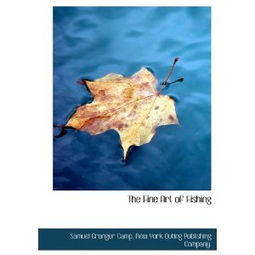Introduction
Sea fishing, with its vast oceanic playground and diverse marine life, offers an exhilarating experience for anglers of all levels. Among the many techniques employed in sea fishing, one of the most effective and often overlooked is using small fish as bait. This article delves into the art of sea fishing, focusing on how to properly hang and use small fish bait to improve your chances of landing that big catch. Whether you're a seasoned pro or a beginner looking to enhance your skills, read on to discover the secrets of using small fish as your go-to bait.
Understanding Small Fish Bait
Small fish, such as sardines, anchovies, and mackerel, are highly attractive to a wide range of sea creatures. These bait fish are rich in oil and protein, making them irresistible to predators. By understanding the nature of small fish bait, you can tailor your approach to different species and fishing conditions.
Choosing the Right Small Fish Bait
The first step in using small fish as bait is selecting the right species. Different fish species have varying preferences when it comes to food, so it's crucial to choose bait that matches the diet of your target fish. Here's a guide to selecting the best small fish bait for various species:
- For Tuna and Mackerel: Use fresh mackerel or sardines, as these species are known to feed on them.
- For Billfish: Choose small fish with firm flesh, such as bonito or skipjack tuna.
- For Bottom Feeders: Opt for smaller, more delicate fish like smelt or herring.
- For Pelagic Species: Freshly caught small fish like sardines or anchovies are ideal.
Preparation of Small Fish Bait
Once you've selected the appropriate small fish, it's time to prepare them for use as bait. Here are some essential steps to ensure your bait is ready for the sea:
- Dehead and Clean: Start by removing the heads and innards of the fish. This not only makes the bait more appealing but also helps prevent any unwanted smells.
- Scale Removal: Depending on the species, you may need to remove the scales. This step is often skipped with small fish, as the scales don't affect their attractiveness to predators.
- Cutting Techniques: To increase the surface area of the bait, cut the fish into strips or chunks. This exposes more of the fish's flesh to the water, making it more enticing.
- Freezing: If you're using fresh fish that you've caught yourself, freezing them for a few hours can help preserve their freshness and firmness.
Hanging Small Fish Bait

The way you hang your small fish bait can significantly impact your fishing success. Here are some common methods:
- Jigging: Attach the bait to a lightweight jigging rod and let it sink to the desired depth. Use quick, upward movements to mimic the natural swimming motion of the bait fish.
- Sliding: Slide the bait along the bottom using a heavy-duty sinker. This method is effective for targeting bottom feeders.
- Trolling: Attach the bait to a fishing line and slowly pull it through the water. Trolling is a great way to cover more ground and attract a variety of fish.
- Free Swimming: Tie the bait directly to the fishing line and let it swim freely. This method is best for species that are more active and prefer to chase their prey.
Fishing Techniques
In addition to the proper hanging of small fish bait, employing effective fishing techniques is crucial for success. Here are some tips to help you improve your sea fishing skills:
- Observe the Water: Pay attention to water movement, surface disturbances, and bird activity. These can indicate the presence of fish.
- Use Live Bait: Live bait, such as small fish, is often more effective than dead bait. Live bait is more active and can attract the attention of passing fish.
- Adjust Your Lure: If you're using artificial lures, adjust your retrieve speed and depth based on the behavior of the fish.
- Stay Patient: Sea fishing can be unpredictable. Patience is key, especially when using small fish bait.
Conclusion
Using small fish as bait in sea fishing is a technique that can greatly enhance your chances of landing a big catch. By understanding the nature of small fish bait, selecting the right species, preparing the bait properly, and employing effective fishing techniques, you can become a master of sea fishing. So, grab your rod, cast out your line, and start reeling in those delicious marine creatures. Happy fishing!












